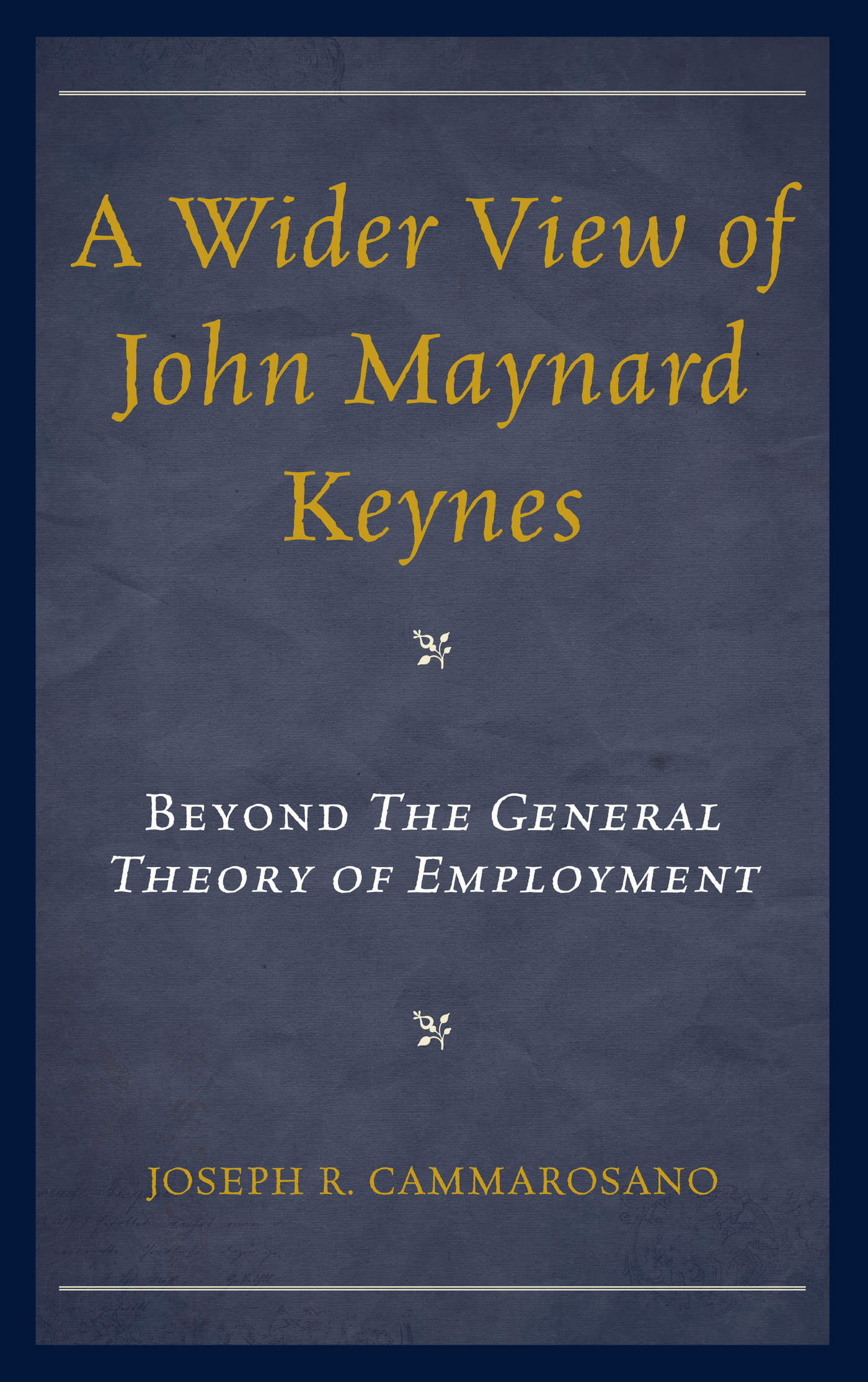A Wider View of John Maynard Keynes
A Wider View of John Maynard Keynes
Beyond The General
Theory of Employment
Joseph R. Cammarosano
LEXINGTON BOOKS
Lanham Boulder New York London
Published by Lexington Books
An imprint of The Rowman & Littlefield Publishing Group, Inc.
4501 Forbes Boulevard, Suite 200, Lanham, Maryland 20706
www.rowman.com
Unit A, Whitacre Mews, 26-34 Stannary Street, London SE11 4AB
Copyright 2016 by Lexington Books
All rights reserved. No part of this book may be reproduced in any form or by any electronic or mechanical means, including information storage and retrieval systems, without written permission from the publisher, except by a reviewer who may quote passages in a review.
British Library Cataloguing in Publication Information Available
Library of Congress Cataloging-in-Publication Data
Names: Cammarosano, Joseph R., author.
Title: A wider view of John Maynard Keynes : beyond the general theory of employment / Joseph R. Cammarosano.
Description: Lanham, MD : Lexington Books, 2016. | Includes bibliographical references and index.
Identifiers: LCCN 2016002101 (print) | LCCN 2016004370 (ebook) | ISBN 9781498518581 (cloth : alk. paper) | ISBN 9781498518598 (electronic)
Subjects: LCSH: Keynes, John Maynard, 1883-1946. | Monetary policy. | Economic policy. | Commercial policy. | International economic relations. | Keynesian economics.
Classification: LCC HG230.3 .C356 2016 (print) | LCC HG230.3 (ebook) | DDC 330.15/6--dc23
LC record available at http://lccn.loc.gov/2016002101
 TM The paper used in this publication meets the minimum requirements of American National Standard for Information Sciences Permanence of Paper for Printed Library Materials, ANSI/NISO Z39.48-1992.
TM The paper used in this publication meets the minimum requirements of American National Standard for Information Sciences Permanence of Paper for Printed Library Materials, ANSI/NISO Z39.48-1992.
Printed in the United States of America
To Gene, Nancy, and Joseph
Acknowledgments
This work is the outcome of a graduate course I taught on John Maynard Keynes years ago during the ascendancy of Keynesian economics. In the years following the decline of Keynes popularity, the courses lecture notes were turned over less frequently, if not at all. However, with the return of interest in Keynes teaching in the aftermath of the financial collapse of 20072008, I took another look at those yellowed lecture notes. At the suggestion of Mr. Joseph Parry, the economics editor of Lexington Books, I decided that the time was propitious to convert those notes into a book.
In bringing this effort to reality, I find that it would not have been possible without the generous support of others. I am indebted to many of my present and former colleagues at Fordham University and in the public sector as well. I owe a very special note of thanks to Professor Dominick Salvatore and Professor Eugene Diulio, esteemed colleagues with whom I have been associated at Fordham for some fifty years, for their constant encouragement and support. In addition, I want to add a note of gratitude and remembrance to the late Samuel Cohn, deputy director, under whom, as a young man, I was privileged to work during my service in the U.S. Bureau of the Budget. To my former graduate students, I am indebted for their challenging questions and keen insights as we struggled through some of the more opaque pages of Keynes writings. Hopefully, this effort will help to address some of their lingering questions.
A special note of appreciation is owed to Ms. Maura Reilly. She not only typed the difficult handwriting of my manuscript, but provided exceptional editorial assistance as well. Mr. Joseph Parry, Ms. Emily Roderick, Ms. Sarah Craig, and Ms. Megan DeLancey of Lexington Books deserve commendation for shepherding this work from start to finish and hopefully under budget. I also want to thank Mr. Adam Hirschberg, senior permissions associate of the Cambridge University Press, for his assistance in my gaining permission to quote material from Keynes works. All of the works quoted are reprinted with the permission of Cambridge University Press. Finally, I want to express my gratitude to Fordham University, where I have spent more than fifty years, for the stimulating and congenial intellectual environment that motivated me to produce this work.
Introduction
An Overture to Keynes Major Economic Writings
John Maynard Keynes, one of the most dominant and influential economists of the twentieth century, was born in Cambridge, England, on June 5, 1883. His father was a renowned economist in his own right and his mother a very accomplished woman who served as the mayor of Cambridge. Keynes attended Eton, Englands most prestigious preparatory school. Following his graduation from Eton, he attended Cambridge University where he earned a degree in mathematics and studied economics under Alfred Marshall and Arthur Pigou.
Upon the completion of his studies at Cambridge, he received a civil service appointment to the India Office, although he had preferred one to the British Treasury. After completing two years of service in the India Office, he returned to Cambridge as a fellow in Kings College and later became bursar of the school as well. Over the course of his life, Keynes was a practicing economist, editor of the Economic Journal, a highly successful investor, journalist, public servant, and enthusiastic patron of the arts. He died on April 21, 1945, a life prematurely cut short by heart disease.
As the author of The General Theory of Employment, Interest and Money, Keynes developed a new school of economic thought, namely, Keynesian economics, which in time became the basis of macroeconomics. Following the publication of The General Theory, Keynesian economics remained the most important school of economic thought for some forty years, the period covering the middle one-third of the twentieth century. However, it began to lose favor during the 1970s in the face of an economic slowdown, rising oil prices, and rapid inflation. Quite simply, Keynesian economics failed to provide an answer to the stagflation of the time, that is, how it was possible to have unemployment and high inflation at one and the same time.
Monetarists led by Professor Milton Friedman of the University of Chicago cast doubt on Keynesian economics and its reliance on fiscal policy to deal with economic crises. They placed greater emphasis on the use of monetary policy to resolve problems. Very importantly, too, they brought about a revival of free market economics, which calls for limited government spending, less regulation of enterprise, and low taxes. The free market, they argued, was self-regulating and did not need government oversight.
The view that the government cannot resolve all economic issues was further advanced by the school of rational expectations, which also had its origin at the University of Chicago. Basically, its argument was that policy makers have limited ability to control events, because their actions can be anticipated and discounted before they can take effect.
Although the influence of Keynesian economics declined after 1970, it came back into prominence with the financial collapse of 20072008. It provided an appropriate response to the emergency at hand. In the United States, the overextended policy of monetary ease by the Federal Reserve and the governments encouragement of home ownership led to a housing bubble and the resulting excesses of an overleveraged financial system. Real estate values dropped dramatically; foreclosures increased; and credit was hard to find. Financial institutions, public and private, with heavy investments in mortgages of questionable value, experienced substantial losses. A number of investment banks and large multinational commercial banks had to be shut down or merged with stronger ones. The stock market suffered stomach-churning declines not experienced since the stock market crash of 1929. Businesses and governments alike cut wages and reduced their workforces, causing the unemployment rate in the United States to rise to over 10 percent.
Next page
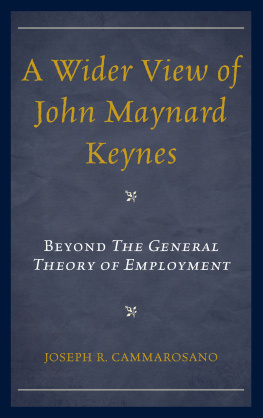
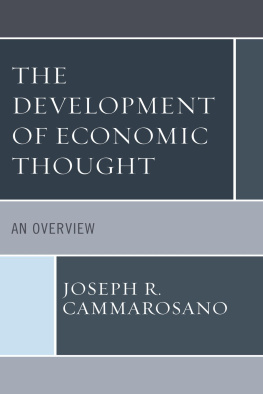
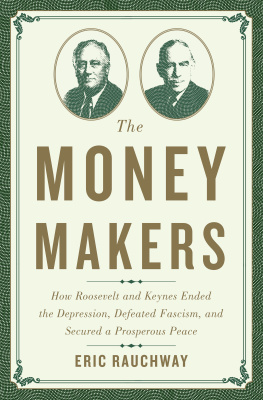
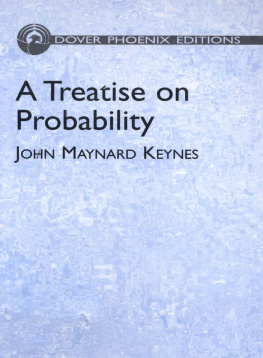


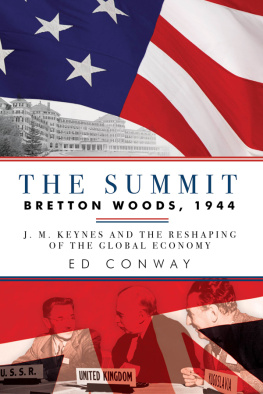
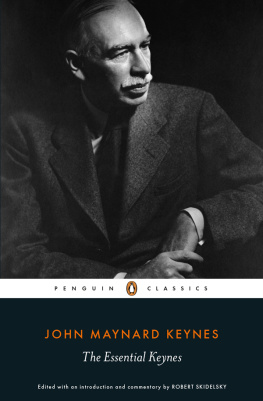
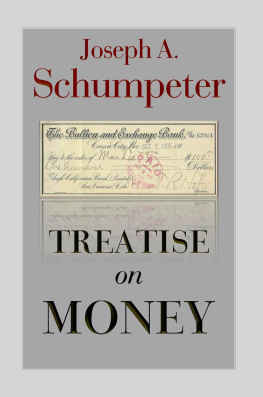
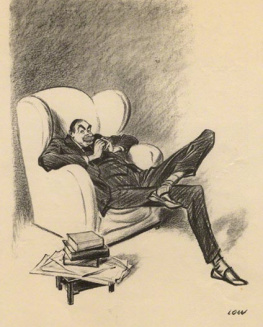
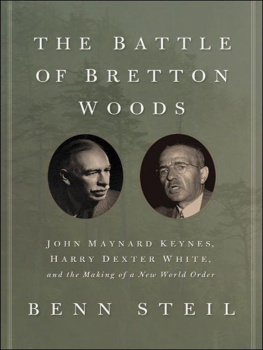
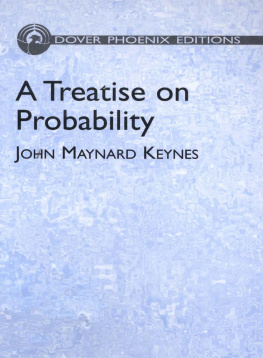
 TM The paper used in this publication meets the minimum requirements of American National Standard for Information Sciences Permanence of Paper for Printed Library Materials, ANSI/NISO Z39.48-1992.
TM The paper used in this publication meets the minimum requirements of American National Standard for Information Sciences Permanence of Paper for Printed Library Materials, ANSI/NISO Z39.48-1992.